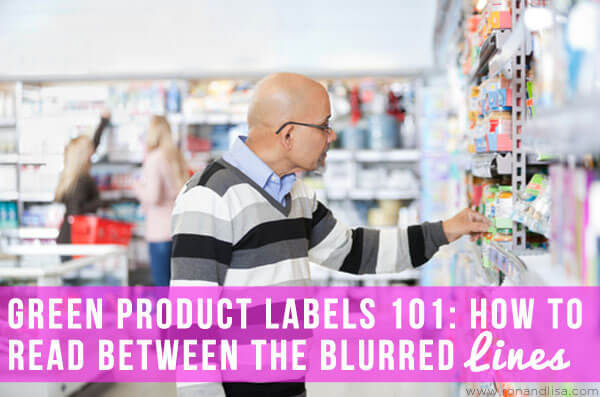One of the most significant steps toward a healthier planet will occur from supporting products and services that hold independent green certifications. With every company labeling themselves as conscientious, distinguishing between a PR stunt and a genuine commitment to the environment can be a difficult task.
Somewhere along the way, being eco-friendly became a selling point used by companies; whether their products were actually green or not. The latter is called greenwashing and it happens more than you think. Below we’ll take a look at good, bad and the ugly products and labels as they pertain to green products.
Biodegradable Product Labeling
While not an indicator of the toxicity of the product, the biodegradable label can reveal it’s environmental impact. Amway, for example, has a track record and commitment to environmental leadership that goes back to its founding. The first product launched by Amway in 1959 was among the first biodegradable cleaning products on the market. However, they received extremely low scores in EWG’s Guide to Healthy Cleaning with the majority of the products ranking an ‘F’ for toxicity. This is an example of why it’s essential to read between the green lines and choose products that are both good for mother earth and your physical health.
Biodegradable labels have been a big selling point for many years. Unfortunately, many companies just slapped the label on products without regard for anything other than their company’s bottom line. It got so bad that a few years ago the FTC had to implement new laws aimed at all the untruthful biodegradable claims. The highest fine they can impose is $450,000. Hopefully, this deters companies from being misleading since many consumers rely heavily on the label. Basically, we are mostly on our own when it comes to biodegradable labels without a certification.
Antibacterial Soap
All most parents know, kids can be walking petri dishes that are unintentionally infect as many people as they can in as little time as possible. Many of us have purchased antibacterial soap to combat the germ-spreading ways of little ones. Unfortunately, we’ve been fooled since most contain synthetic fragrance and dangerous Triclosan. Tricolsan has been linked to skin irritation, allergy susceptibility, bacterial and compounded antibiotic resistant, and dioxin contamination to destruction of fragile aquatic ecosystems.
What’s more, is that antibacterial soap, according to the FDA, isn’t anymore effective than regular soap and typically costs more.
“…There currently is no evidence that over-the-counter (OTC) antibacterial soap products are any more effective at preventing illness than washing with plain soap and water.” ~Colleen Rogers, Ph.D., a lead microbiologist at FDA.
Rubber Mulch from Recycled Tires
Are you familiar with the playgrounds that have rubber mulch around the equipment? Those are recycled tires and are not good for the environment or people. In fact, they can be downright harmful.
According to a report from The Office of Environmental Health Hazard Assessment (OEHHA) of the California Department of Health based on the use of recycled tire materials on playgrounds, 49 chemicals, seven of which were carcinogens were detected.
Related Articles:
New Car Smell – Not So Sweet!
Meet Fisker: A New Kind of CARma
The SMARTest Car on the Block!
Unplug & Recharge with the Power of Nature
Climate Change: Fact or Fiction?
PVC: THE POISON PLASTIC! Get Safer Supplies & Back to School Guides
Do You Know What’s Lurking in Your Child’s Classroom?
4 Sexy & Sustainable-Summer Must Haves for Her
The Incredible Shrinking House: How Small Can You Go?
Eco-Labels & What they Really Mean
Organic Food Labels
Here is a bit of good news: Organic food production is heavily regulated and monitored by the USDA’s National Organic Program. Look for the USDA certified labels to be sure you are getting the real thing. However, understand there are a few different levels of certification and that your organic product may not always be 100 percent organic. Only if the label says “100 Percent Organic” are all the ingredients in a product organic. Labels that just state “organic” are permitted to include up to five percent non-organic ingredients. The “Made with Organic” label means that 70 percent of ingredients in the product are organic.
While we have just scratched the surface, you can see that deciphering product labels and marketing claims isn’t always easy. You must stay on top of label trends, government crackdowns and scams to make sure you aren’t giving your money to unscrupulous companies.



